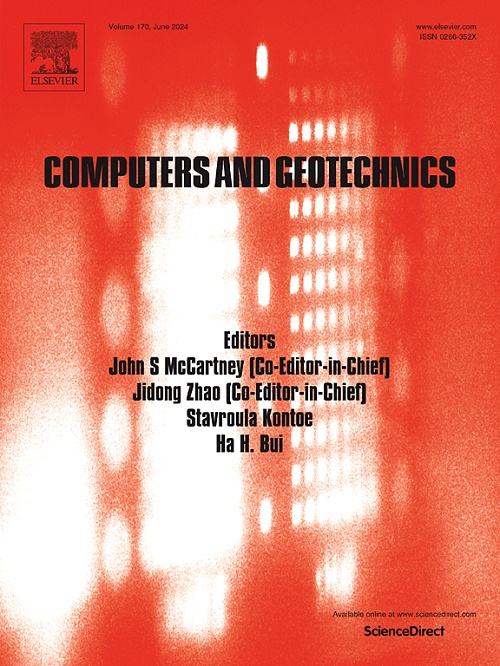使用可解释机器学习的垃圾填埋场稳定化期数据驱动预测
IF 5.3
1区 工程技术
Q1 COMPUTER SCIENCE, INTERDISCIPLINARY APPLICATIONS
引用次数: 0
摘要
本研究探讨了数据驱动的机器学习(ML)模型的潜力,以捕获控制城市固体废物(MSW)填埋场中废物降解的复杂相互依存过程,并影响稳定所需的时间。垃圾填埋场的有机降解可以持续几十年,并由相互依赖的热、水力、生化和机械过程控制。虽然现有的数值模拟方法可以准确地模拟这些过程,但它们的计算量很大,限制了它们在更广泛的工程优化工作中的可行性。此外,来自实验室或实地研究的数据虽然有价值,但往往是特定地点的,范围有限,因此不适合开发可推广的预测模型。为了解决这些挑战,本研究评估了基于ml的替代模型的可行性,该模型是根据伊利诺伊大学芝加哥分校开发的热-水-生物力学(CTHBM)耦合模型生成的数据进行训练的。我们评估了几种机器学习模型——包括支持向量回归(SVR)、基于树的集成模型和多层感知器(MLP)——在预测垃圾填埋场稳定化期方面的准确性和通用性。基于树的集成模型表现出过拟合,对测试数据的精度较低,表明泛化能力降低。相比之下,SVR和MLP显示出较高的准确性(R2≈0.95),在训练和测试数据集上的均方根误差均低于一年。模型可解释性工具,如SHapley加性解释(SHAP)值和部分依赖图,进一步说明了表现最佳的- SVR模型在捕捉关键变量对预测垃圾填埋场稳定化期的影响方面的有效性。这些结果强调了基于机器学习的方法在增强垃圾填埋场评估和优化预测工具方面的潜力。本文章由计算机程序翻译,如有差异,请以英文原文为准。
Data-driven prediction of landfill stabilization period using interpretable machine learning
This study investigates the potential of data-driven machine learning (ML) models to capture the complex interdependent processes that control waste degradation in municipal solid waste (MSW) landfills and influence the time required for stabilization. Organic degradation in landfills can span several decades and is controlled by interdependent thermal, hydraulic, biochemical, and mechanical processes. While existing numerical modeling approaches can accurately simulate these processes, they are computationally intensive, limiting their feasibility for broader engineering optimization efforts. Moreover, data from laboratory or field studies, although valuable, are often site-specific and limited in scope, making them unsuitable for developing generalizable predictive models. To address these challenges, this study evaluates the feasibility of ML-based surrogate models trained on data generated from a coupled thermo-hydro-bio-mechanical (CTHBM) model developed at the University of Illinois Chicago. We evaluated several ML models − including support vector regression (SVR), tree-based ensemble models, and multi-layer perceptron (MLP) − for their accuracy and generalizability in predicting landfill stabilization periods. The tree-based ensemble models exhibited overfitting, with low accuracy on the testing data, indicating reduced generalizability. In contrast, SVR and MLP demonstrated high accuracy (R2 ≈ 0.95), with root mean squared errors below one year on both training and testing datasets. Model interpretability tools, such as SHapley Additive exPlanation (SHAP) values and partial dependence plots, further illustrated the best-performing − SVR model’s efficacy in capturing the influence of key variables on the predicted landfill stabilization period. These results underscore the promise of ML-based approaches’ potential to enhance predictive tools for landfill evaluation and optimization.
求助全文
通过发布文献求助,成功后即可免费获取论文全文。
去求助
来源期刊

Computers and Geotechnics
地学-地球科学综合
CiteScore
9.10
自引率
15.10%
发文量
438
审稿时长
45 days
期刊介绍:
The use of computers is firmly established in geotechnical engineering and continues to grow rapidly in both engineering practice and academe. The development of advanced numerical techniques and constitutive modeling, in conjunction with rapid developments in computer hardware, enables problems to be tackled that were unthinkable even a few years ago. Computers and Geotechnics provides an up-to-date reference for engineers and researchers engaged in computer aided analysis and research in geotechnical engineering. The journal is intended for an expeditious dissemination of advanced computer applications across a broad range of geotechnical topics. Contributions on advances in numerical algorithms, computer implementation of new constitutive models and probabilistic methods are especially encouraged.
 求助内容:
求助内容: 应助结果提醒方式:
应助结果提醒方式:


